Preparing for childbirth involves many steps, and perineal massage is one simple yet powerful technique that can make a real difference. By gently massaging the muscles and tissues around the vagina and anus, you can help improve flexibility, reduce the risk of tearing, and ease discomfort during labor and postpartum recovery. While the idea of perineal massage might seem unfamiliar or even a little intimidating at first, it’s a natural and safe way to support your body as it gets ready for birth. In this guide, we’ll walk you through everything you need to know—from why it works to how to do it effectively—so you can feel confident and prepared for this incredible journey ahead.
What is Perineal Massage?
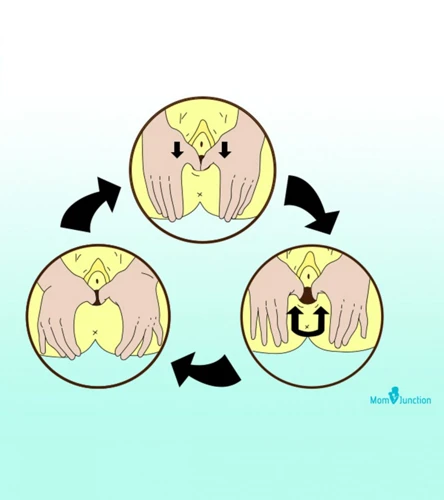
As your due date approaches, you might be looking for ways to prepare your body for childbirth. One simple yet powerful technique that can help is perineal massage—a gentle massage of the area between the vagina and anus. This practice can improve flexibility, reduce the risk of tearing, and help you feel more in control of your birth experience.
The best part? It’s easy to do and can be performed by you, your partner, or even a healthcare professional. The key is to ensure clean hands, use a soothing lubricant, and take your time.
To get started, find a comfortable position—many women prefer sitting or reclining with their legs supported. Apply a lubricant to the perineal area, then use your thumb or forefinger to make gentle, circular motions, gradually increasing pressure as you get used to the sensation. Aim for 5 to 10 minutes, three times a week in the last few weeks of pregnancy to get the most benefits.
Beyond the physical benefits, perineal massage is also a great way to connect with your body and prepare mentally for labor. It’s a small but meaningful step you can take to support your body, reduce discomfort, and promote better healing after birth. Consider it a moment of self-care in your pregnancy journey—because your comfort and confidence matter, too.
How to Do Perineal Massage Before Birth
Performing perineal massage before birth is a simple practice that can help to optimize childbirth experiences. It is important to make sure that hands are clean and that a lubricant is used. As the massage can be done by the woman herself, her partner, or a healthcare professional, it is important to make sure that the person performing the massage is comfortable and knowledgeable about the technique.
To begin, the woman or the person performing the massage should sit in a comfortable position and apply a lubricant to the area between the vagina and anus. Once the lubricant is applied, the person should use the thumb or forefinger to make gentle, circular motions. The massage should be repeated for about 5 to 10 minutes, three times per week during the last few weeks of pregnancy.
Perineal massage can be an important part of the prenatal care process. It helps to reduce the risk of tearing during delivery, reduce labor pain, and promote better healing after delivery. Performing the massage in the last few weeks of pregnancy can help to get the maximum benefits and optimize the childbirth experience.
Benefits of Perineal Massage
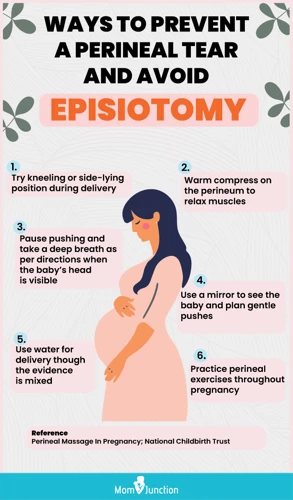
- Stimulates Blood Flow: Perineal massage helps to increase the blood flow to the perineum, which can improve elasticity and reduce the risk of tearing during childbirth.
- Helps Prepare the Perineum: Perineal massage helps to prepare the perineum for labor and delivery by stretching and loosening the tissues.
- Helps Reduce the Risk of Episiotomy: Perineal massage has been shown to reduce the risk of episiotomy and perineal tears during childbirth.
- Relieves Stress: Perineal massage can help to reduce stress and tension in the area, which can make labor and delivery more comfortable.
- Helps to Promote Healing: Regular perineal massage can help to promote healing after childbirth by increasing blood flow to the area and reducing inflammation.
- Decreases Postpartum Pain: Perineal massage can help to reduce postpartum pain by helping to reduce swelling and promoting healing.
Perineal massage is an important part of preparing for a normal delivery. Learning how to do perineal massage correctly can help you reap the maximum benefits, including a reduced risk of episiotomy, improved healing, and decreased postpartum pain.
When to Start Perineal Massage

It is recommended to start perineal massage from the 34th week of pregnancy. This provides the best outcome for a natural birth and reduces the risk of tearing. Starting perineal massage earlier may reduce the risk of an episiotomy, but there is not enough evidence to support this. It is important to remember that perineal massage should not be done during an active labor as it can increase the risk of tearing and increase discomfort.
The best way to know how to massage perineum before labor is to practice regularly during the last month of pregnancy. Perineal massage can be done daily or every other day. The massage should take no more than 5 minutes and can be done in the shower or while sitting or lying down. It is important to keep the area clean and lubricated with oil or water-based lubricant such as K-Y Jelly.
Preparing for Perineal Massage
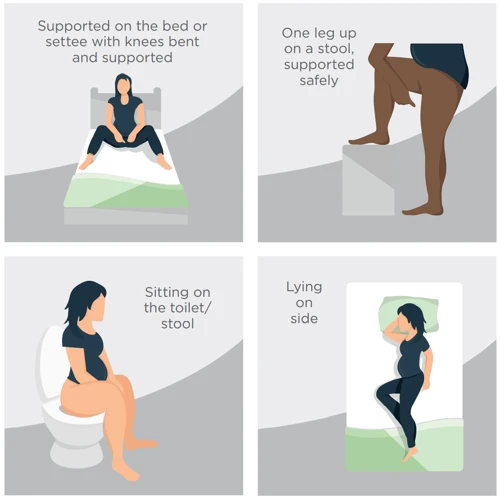
To get the most out of perineal massage, it’s important to follow these key steps for proper preparation.
Gather Supplies: Before beginning, make sure you have all the supplies needed for perineal massage. These include a lubricant, such as coconut oil or vitamin E oil, a mirror, and a chair or stool with a comfortable backrest.
Cleanse the Area: Before beginning the massage, it is important to cleanse the area. Use warm water and mild soap to wash the area. Make sure to rinse thoroughly and dry off completely.
Position Yourself: When positioning yourself for the massage, sit in a comfortable chair or stool with your legs slightly apart. Place the mirror between your legs to allow for a better view of the perineal area.
Lubricate: Apply a generous amount of the chosen lubricant to the perineal area. It is important to use a lubricant that will not irritate the skin or cause an allergic reaction.
Massage: Once the area is lubricated and the mirror is in place, begin the massage. Start by gently stroking the skin of the perineum, using your thumb and index finger. Make sure to use small, circular motions. Gradually increase the pressure and duration of the massage. As the massage progresses, you can use your other hand to stretch the skin of the perineum.
Relax: Throughout the massage, it is important to remain relaxed and to take deep breaths. This will help keep the muscles relaxed and reduce the risk of injury.
Performing perineal massage can help reduce the risk of tearing or an episiotomy during labor and delivery. By following these steps, you can ensure that you are properly prepared for perineal massage and that you receive the maximum benefits from it.
Steps for Perineal Massage
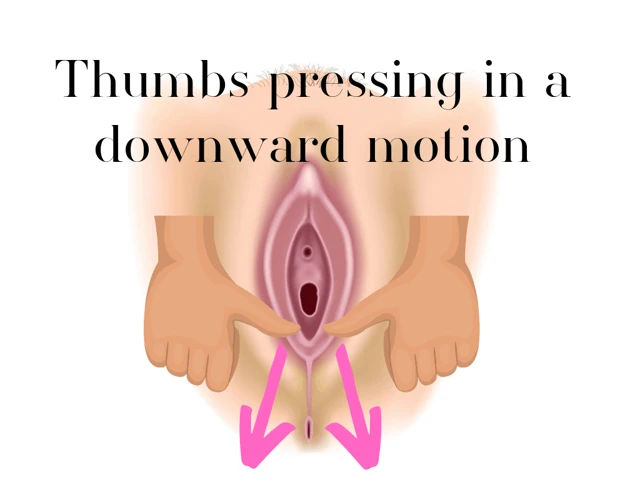
Step 1: Apply a generous amount of lubricant to your fingers and the perineum.
Step 2: Insert your thumbs into the vagina and press downward towards the anus.
Step 3: Making a “U” shape, move the thumbs outward, gently stretching the perineum.
Step 4: Repeat the stretch three to five times.
Step 5: After the stretch, massage the perineum in a circular motion.
Step 6: Breathe deeply as you massage.
Step 7: Massage in a clockwise pattern for two minutes.
Step 8: Move the thumbs in a downward direction and repeat the stretch three to five times.
Step 9: Finally, return the thumbs to the starting position and remove them from the vagina.
Perineal massage is a great way to help prepare for childbirth, as it may reduce the risk of tearing or the need for an episiotomy. Following these steps on how to massage perineum for childbirth will help ensure you receive the maximum benefits of perineal massage.
Tips for Perineal Massage
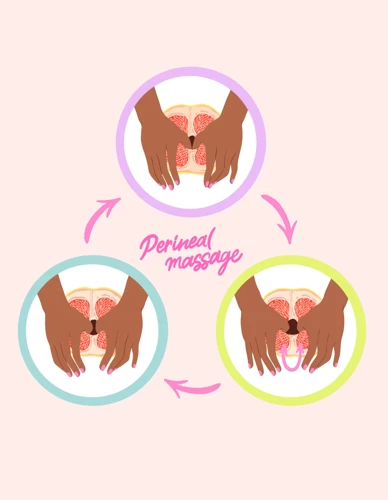
- It is best to perform perineal massage with the assistance of a partner.
- Be sure to use natural oils such as almond oil, olive oil, or grapeseed oil on the perineum for lubrication.
- Avoid using creams, lotions, or petroleum jelly as these can cause irritation.
- Gently massage the perineum in a circular motion with a thumb or forefinger for at least five minutes.
- Before applying pressure to the perineum, ensure that the area is warm and relaxed.
- Be sure to maintain a gentle pressure, as too much pressure can cause discomfort.
- If you are experiencing any pain or discomfort during the massage, stop and consult your doctor or midwife.
- Wash your hands before and after each massage.
- Do not rush the massage, as it takes time to work.
- Watch a how to do perineal massage video for a visual demonstration.
How to Do Perineal Massage with Pictures
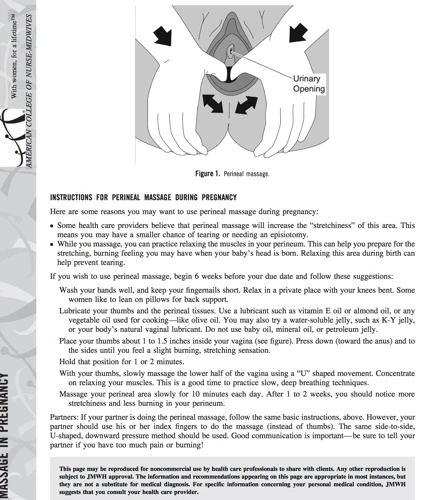
| Step | Description | Picture |
|---|---|---|
| 1 | Wash your hands and use a lubricant, such as oil or water-based. You can also use a lanolin-based product. | |
| 2 | Sit in a comfortable position, such as on the floor, with your knees bent and your feet flat on the floor. | |
| 3 | Using your thumbs or index fingers, massage your perineum, in a circular motion for 10-15 seconds. | |
| 4 | Repeat this motion 5-10 times. | |
| 5 | When you’re finished, use a tissue to wipe off any excess lubricant. |
Perineal massage can help to relax and stretch the pelvic floor muscles, which can reduce the pain of childbirth and can also help to reduce the risk of tears or an episiotomy. It is most effective when done during the last trimester of pregnancy, but can also be done after childbirth to help with healing. Be sure to talk to your healthcare provider before starting any massage.
How to Do Perineal Massage with Video
| Step | Description |
|---|---|
| 1 | Wash your hands and make sure your nails are trimmed and smooth. |
| 2 | Apply a water-soluble lubricant to your fingers and to the area around the perineum. |
| 3 | Place your thumbs about one inch inside your vagina and press firmly against the sides of the perineum. |
| 4 | Using a “U” motion with your thumbs, press downwards onto the perineum, then outwards and upwards in a sweeping motion. |
| 5 | Repeat the massage slowly and gently for about five minutes. |
| 6 | Watch this video for a complete guide on how to do a perineal massage: Perineal Massage: How to Do It. |
Frequently Asked Questions
Is Perineal Massage Safe?
Yes, perineal massage is safe. It is recommended that you practice it under the guidance of a professional. Here are some safety tips to ensure its safe performance:
- Perform the massage in a relaxed and comfortable position.
- Wash your hands before and after the massage.
- Use lubricant for smooth and comfortable massage.
- Do not press too hard on the perineal area.
- Do not overextend the massage session.
- Stop the massage if you feel any pain or discomfort.
It is also important to note that perineal massage is not recommended for pregnant women with pelvic inflammatory disease, vaginal infections, and certain other conditions. If you have any doubts or concerns, consult your healthcare provider before engaging in perineal massage.
How Often Should I Do Perineal Massage?
Perineal massage should be done regularly during the last 4-6 weeks of pregnancy, 3-4 times a week. It is recommended to do perineal massage every day or alternate days in the last week before giving birth. However, it is important to consult your healthcare provider before starting this practice.
Is Perineal Massage Painful?
Perineal massage can be uncomfortable but is not generally painful. During the massage, some women may experience some mild pinching or tugging sensations, but these should not be painful. If any pain does occur, it is important to stop the massage and discuss it with a healthcare provider.
Are There Any Risks Associated With Perineal Massage?
Perineal massage does not generally present any serious risks. However, it is possible to cause minor irritation or bruising, especially if the massage is too deep or vigorous. It is important to be gentle and follow the steps described in this article. If the area is sore, it is best to take a break and wait until it feels better before continuing.
What are the Benefits of Perineal Massage?
Perineal massage is known to have numerous benefits including reducing the risk of tearing during childbirth, reducing labor pain, and increasing the elasticity of the perineum. It also helps to reduce the chance of an episiotomy (surgical incision of the perineum) being needed during childbirth. Perineal massage has also been shown to reduce the risk of postpartum perineal pain, pain during intercourse, and urinary incontinence. Other benefits include reduced swelling and improved recovery of the perineum.
Conclusion
Perineal massage is a valuable technique for promoting flexibility, reducing the risk of tearing during childbirth, and supporting overall pelvic floor health. By practicing it regularly and using the correct techniques, you can enhance comfort and relaxation in preparation for delivery. Always consult with a healthcare provider to ensure it’s suitable for you and to receive personalized guidance. With proper practice, perineal massage can be an empowering addition to your prenatal care routine.
References
- Prenatal Care: What You Need to Know (Department of Health & Human Services)
- Perineal massage: A technique for reducing the risk of tearing during childbirth (Mayo Clinic)







